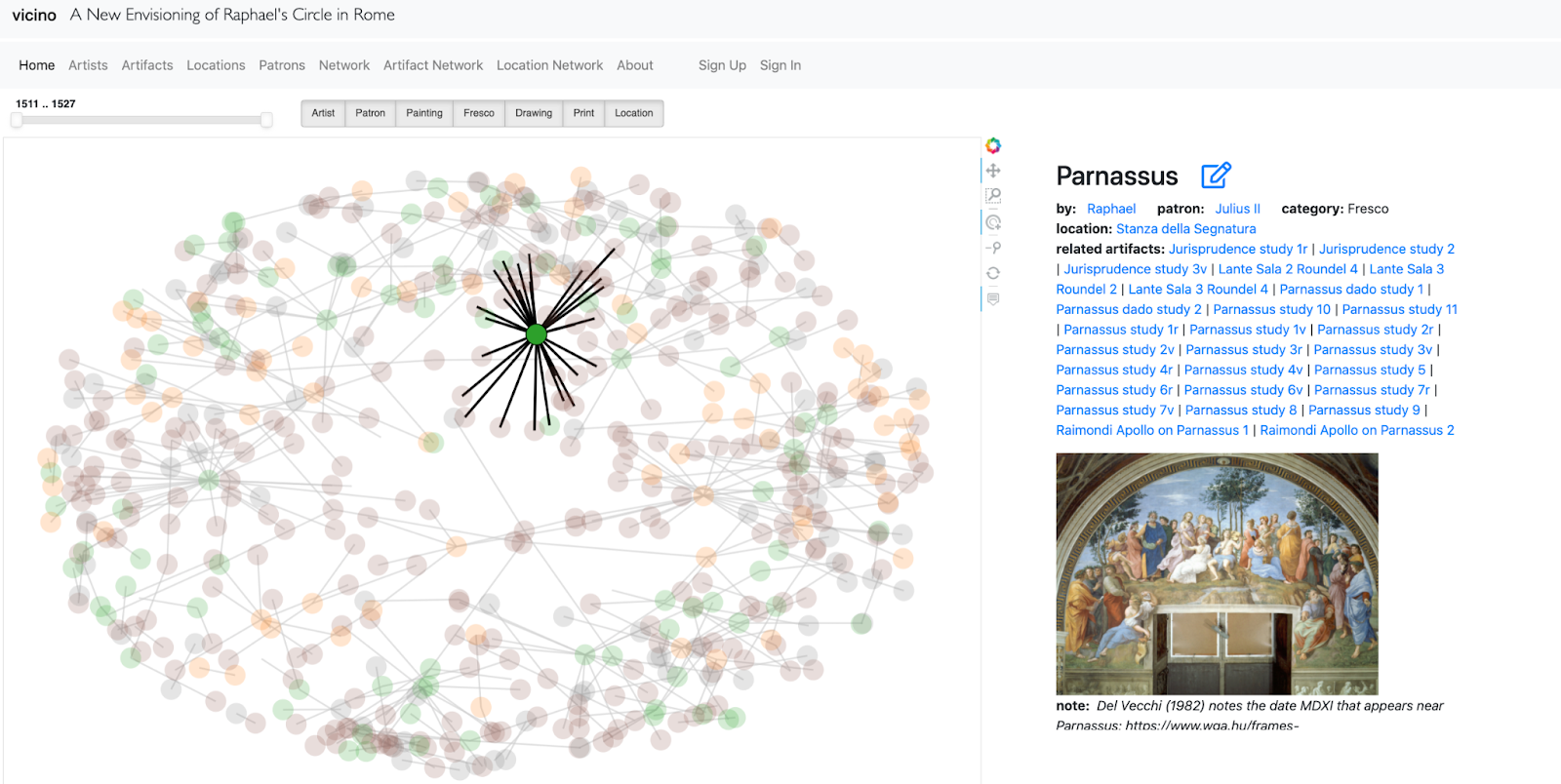
Tulane School of Liberal Arts professor Alexis Culotta and School of Science and Engineering professor Aron Culotta have received a $150,000 grant from the National Endowment for the Humanities (NEH) to develop an interactive platform for visualizing connections between artworks and artists. The project is one of only 15 such Digital Humanities Advancement grants awarded by the NEH in January 2024.
The new tool, called the Artistic Network Toolbox (ANT), will allow researchers to upload datasets capturing relationships like apprenticeships, collaborations, and influences between artists or artworks. With a simple click, it will generate a customized website that supports exploratory network analysis of artistic production to investigate questions like how influential an artist was in the spread of a new style or technique.
“Imagine if a button click transformed a spreadsheet of artwork data into an interactive visualization of artistic connections — shareable among colleagues and classrooms for elaboration — without requiring coding or advanced computational expertise,” said Art History Professor of Practice Alexis Culotta. “The award allows us to turn this idea into reality with the development of an open-source, user-friendly platform to curate, visualize, and share the relationships between art, its creators, and its contexts.”
The project will develop social network analysis algorithms similar to those used to study the spread of ideas in online social platforms like Facebook for data curation, visualization, and analysis.
“ANT has the potential to transform the study of art history and its networks, where a finished work’s genealogy is often told through relationships — apprenticeships, collaborations, patronage, etc. — that mandate both micro-examination of works side-by-side and macro-examination of the social-cultural environment,” Aron Culotta said.
For example, users could upload artwork data from a given workshop or school and see interactive maps of master-apprentice links and knowledge transfer between cities. Or they could visualize networks showing how artistic styles evolved and spread geographically. Data sets can then be edited and refined by other users.
The tool is aimed both at students, who can visualize and explore different eras of art production, and at scholars, who can initiate interdisciplinary collaborations without the burden of expensive, non-intuitive, or siloed technological interfaces. The ultimate goal is democratized access to advanced visualizations for exploring artistic creation, thereby providing new ways of understanding the history of art.

